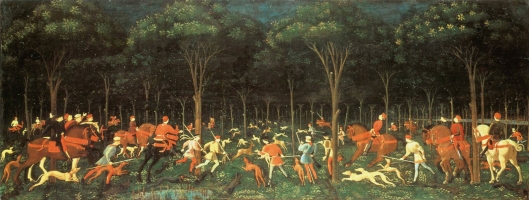Tags
1400s, 15th Century, art, Artists, Florence, Gothic, Italy, landscapes, Painters, Paintings, Paolo Uccello, Renaissance
Having SUCH a busy week, currently I’m finalising details for our office Christmas party on Friday, drowning in table plans and menu choices, while trying to keep on top of the rest of my workload which seems to just keep piling up!! Had a busy weekend too, went wine tasting with my mum on Saturday at the London Wine Academy (last year’s Christmas present from my ex who has now moved to Hungary, I finally got around to going!), which was excellent, and then I had an audition for another musical – Oklahoma! and I got the lead, Laurey!!!! So that’s super exciting! Rehearsals have already started and what with Christmas in THREE WEEKS my social calendar is filling up and my free time is fast dwindling awayyyy… Still, better to be busy than bored eh?!
……………………………………………………….
Name: Paolo Uccello
Work: Painter
Born: 1397
Died: 1475
Hometown: Pratovecchio, Italy and Florence, Italy
Period: Late Gothic, Early Italian Renaissance
Influences: Lorenzo Ghiberti (his tutor)
What I have learnt about his work in general:
Like other emerging Renaissance artists, Paolo Uccello had a great interest in linear perspective. He completed compex studies of the vanishing point and used accurate perspective in his artwork to convey realistic distance and depth, especially in his many paintings of landscapes. He also put emphasis on patterns, colour and pageantry, focussing less on naturalistic emotion and more on decoration.
The Hunt in the Forest
1470
Ashmolean Museum, Oxford
My interpretation of this painting:
This is Uccello’s last known painting before his death, and while not his most famous (which is The Battle of San Romano – a group of three paintings), I feel it best portrays his mastery of perspective. The central vanishing point creates a great sense of depth, with hunters, dogs and horses disappearing into the dark woods in the distance – the viewer is almost sucked in to join the hunt. The bright colours and use of symmetry and repetition create a lively sense of pomp, ceremony and pageantry, contrasting with the naturalistic themes of other Renaissance paintings of the time.

